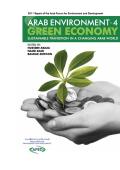As cities are growing in terms of population and physical size, their contributions to national GDP are also increasing due to increased economic activities in urban areas. With this greater role of the urban sector, the demand for urban transportation – passenger and freight has increased many folds in the recent years. With the growth or urban economies, the living conditions and lifestyles of the city people are also changing. As income of the upper and middle class people in the city is increasing, the ownership of private vehicles is increasing rapidly. The Asian cities which do not have any growth management plan for controlling this rapid increase in personal vehicles are experiencing severe traffic congestion and other problems including air pollution, loss of personal and corporate productivity, high cost of transport and poor quality of life. Traffic congestion and air pollution have a negative impact on GDP as it imposes a significant cost in terms of both health and productivity. The traditional way of solving traffic congestion is to increase capacity of the road network.
Regardless of average income, cities and towns have been acting as the engines of economic growth in the Asia-Pacific region, which now hosts half of the world’s mega-cities. New configurations like mega urban regions, urban corridors and city-regions testify to the close links between urban prosperity and new patterns of spatio-economic activity. Productivity and creativity now enable some Asian-Pacific cities to diversify away from manufacturing and move into the global ‘knowledge economy’. These remarkable achievements have enabled Asia-Pacific to take the lead in socio-economic progress, too, with significant reductions in extreme poverty as well as improved conditions for slum-dwellers, an area where some countries have already reached the Millennium Development Goals.

Transport is a fast growing sector. A steadily increasing motorization along with urbanization is a trend that can be observed in most developing countries. This and the oil dependence of the transport sector leads to considerable growth rates of carbon emissions. Action to stop this trend is urgently needed. This paper shows how national and/or urban low-carbon transportation policies could help countries to win the battle and achieve a smart, sustainable economic growth while at the same time stabilizing and later reducing transport emissions. Sustainable Development Policies and Measures in the transport sector include a variety of co-benefits, e.g. reduced air pollution, social equity and economic development. In the context of the global economic crisis such measures promote economic growth, social stability and also can be implemented at reasonable costs.
This discussion paper (report) sets out a concept for a “Green Urban Economy”, as well as the possible courses for action by cities and communities which can aid and drive a transition towards green urban economies. The report is guided by the following core questions:
- What form can a Green Urban Economy take within a sustainability perspective?
- What role can city actors play in the transition?
- What are the factors for success and what challenges emerge?
This discussion paper demonstrates that although greening the economy is relevant on all levels and includes all spheres of government, the local level plays an especially crucial role.
